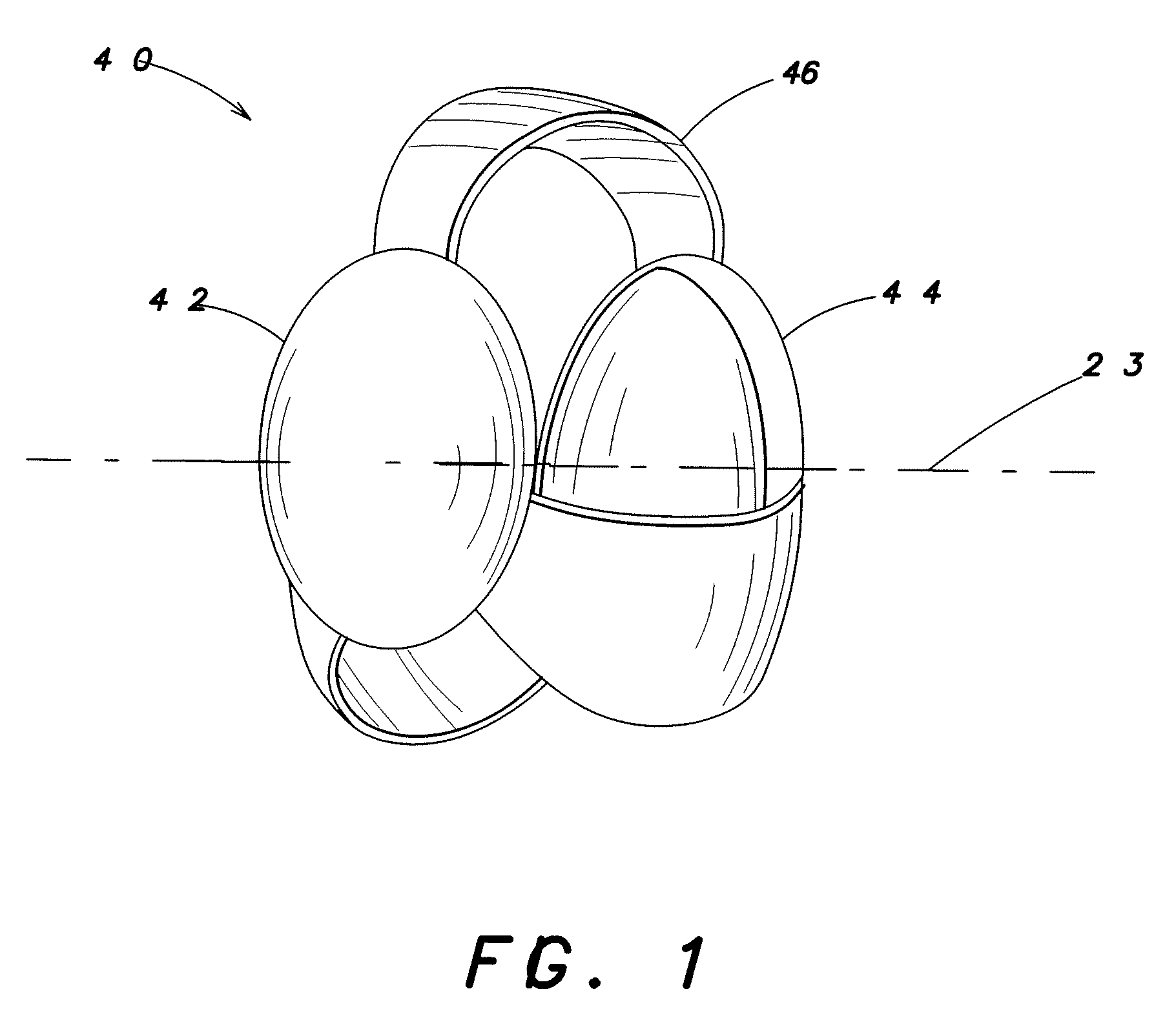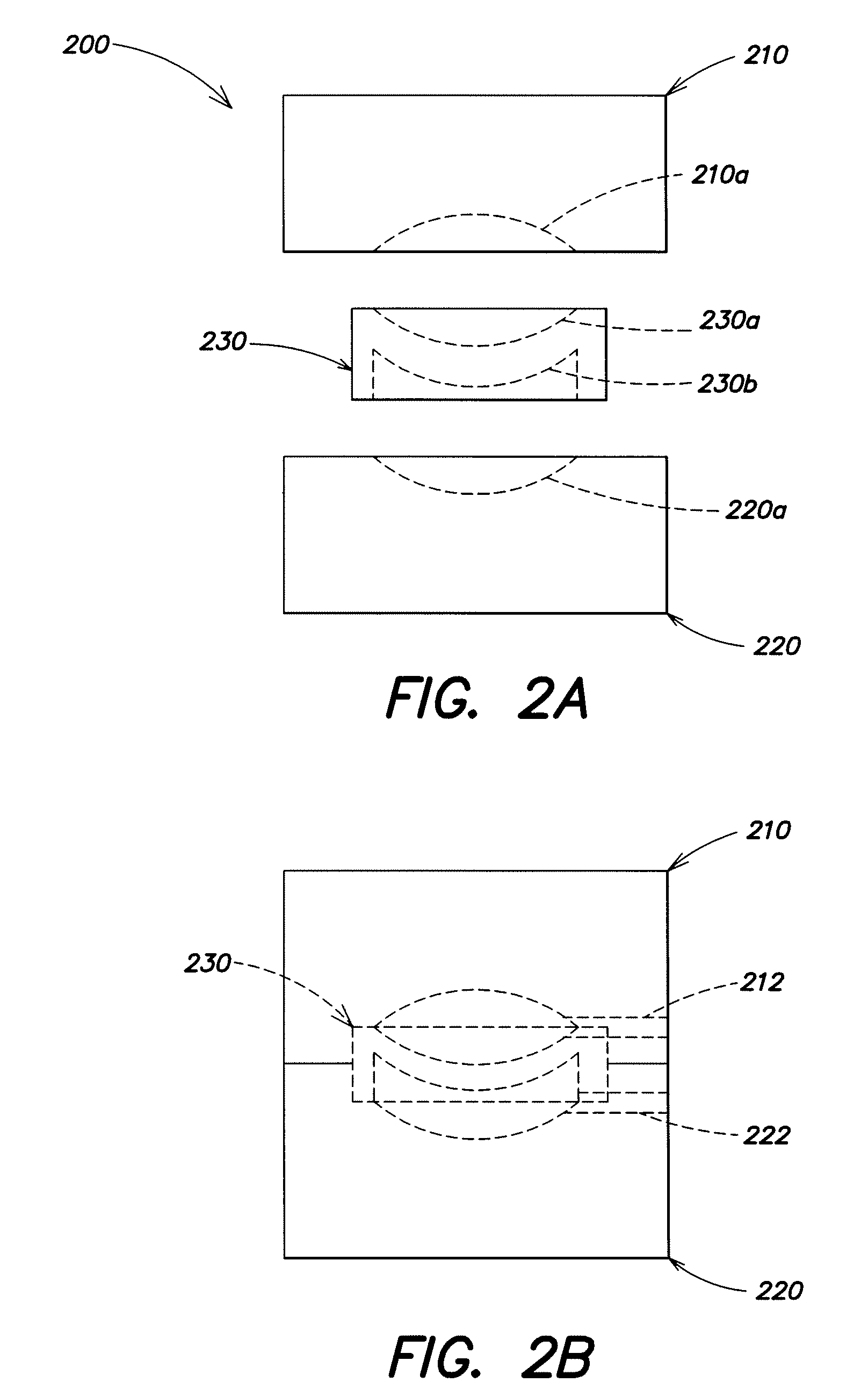Light-adjustable multi-element ophthalmic lens
a multi-element, ophthalmic technology, applied in intraocular lenses, medical science, prosthesis, etc., can solve the problems of natural lens not being able to properly focus and/or direct incoming light to the retina, image blur, and most patients undergoing cataract surgery not having optimal vision
- Summary
- Abstract
- Description
- Claims
- Application Information
AI Technical Summary
Benefits of technology
Problems solved by technology
Method used
Image
Examples
Embodiment Construction
[0025]Aspects of the invention are directed to multi-element ophthalmic lenses comprising an anterior lens element including a light-adjustable material responsive to light of a first wavelength and a posterior lens element comprising a light blocker capable of blocking light of the first wavelength.
[0026]FIG. 1 shows an example of a dual-element IOL 40 according to aspects of the invention. IOL 40 comprises an anterior lens element 42 and a posterior lens element 44 that are connected to one another by biasing elements 46 (e.g., haptics). The IOL has an optical axis 23 extending through the anterior lens element 42 and posterior lens element 44. The anterior lens element comprises a light-adjustable material, and the posterior lens element comprises an ultraviolet (UV) light blocker.
[0027]Biasing elements 46 permit the anterior lens element and the posterior lens element to translate relative to one another to achieve accommodation and disaccommodation, and provide centering of the...
PUM
 Login to View More
Login to View More Abstract
Description
Claims
Application Information
 Login to View More
Login to View More - R&D
- Intellectual Property
- Life Sciences
- Materials
- Tech Scout
- Unparalleled Data Quality
- Higher Quality Content
- 60% Fewer Hallucinations
Browse by: Latest US Patents, China's latest patents, Technical Efficacy Thesaurus, Application Domain, Technology Topic, Popular Technical Reports.
© 2025 PatSnap. All rights reserved.Legal|Privacy policy|Modern Slavery Act Transparency Statement|Sitemap|About US| Contact US: help@patsnap.com



